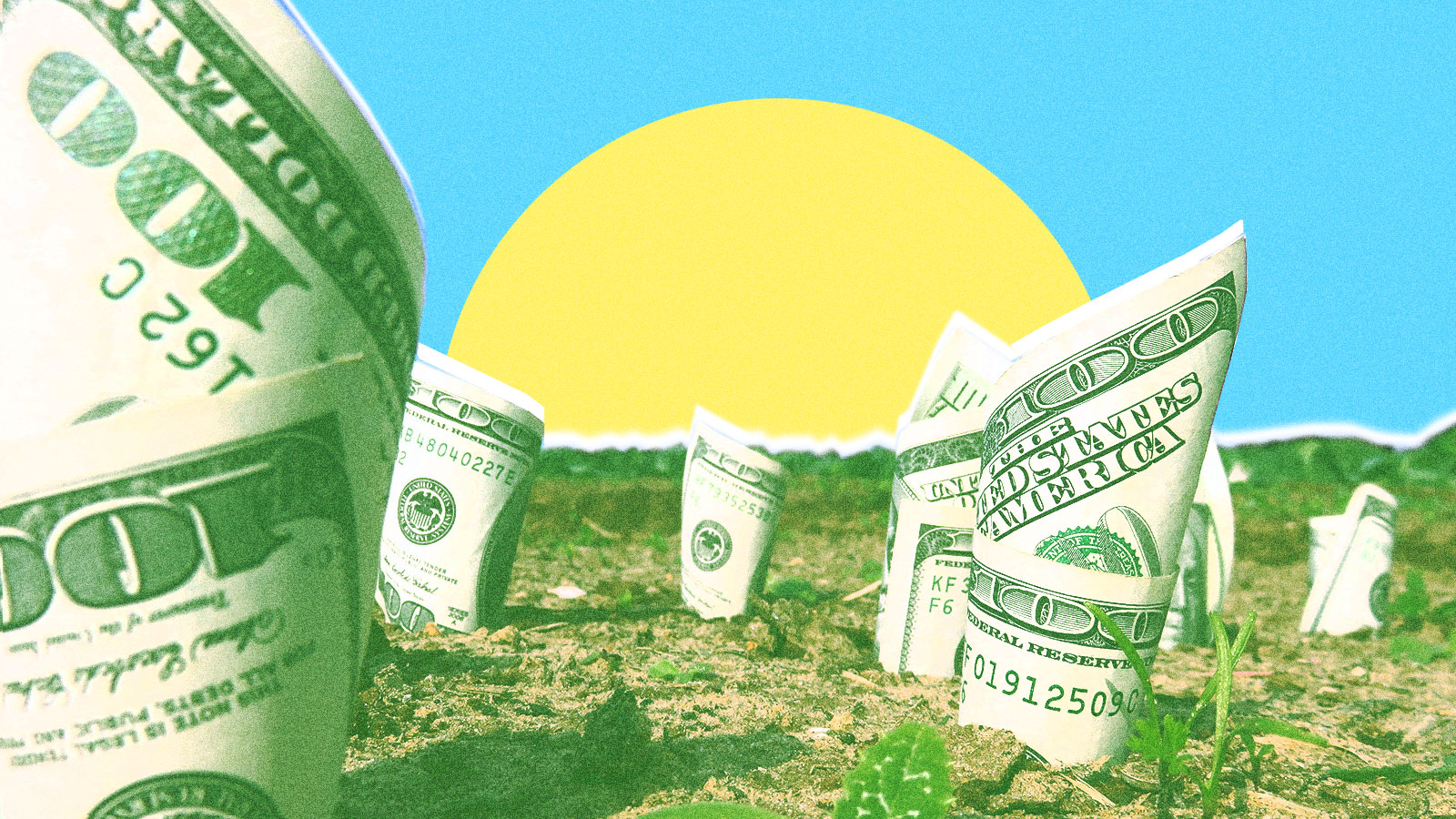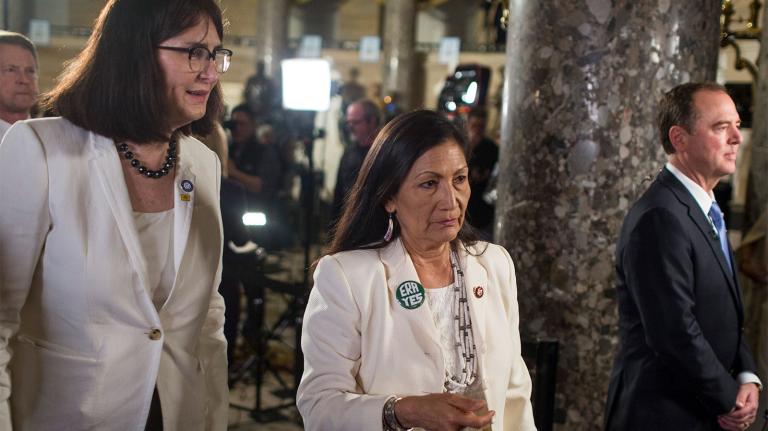Back in February — what we might call, in the world of COVID-19, the “before times” — environmentalists had a whole host of ideas for how to curb climate change. A Green New Deal, for example. Or a revenue-neutral carbon tax.
Then the coronavirus pandemic hit, plans for 2020 were thrown out the window, and strategies for fighting climate change had to change — fast. As governments around the world have struggled with rising unemployment and recurrent shutdowns, advocates and policymakers are quickly shifting their attention to the stimulus plans designed to rescue cratering economies. Their goal: Make at least some of the $10 trillion in worldwide government spending go toward boosting solar energy, wind power, and electrification. In short, environmentalists want to turn stimulus plans “green.”
But is that really the best way to combat climate change? Some experts suggest that, at least in the United States — which is facing the biggest, most precipitous economic slump in recent history — the best path is the one that gets the economy back on track the fastest, no matter if it’s “green.” And as Democrats and Republicans alike zero in on new spending plans ahead of elections in November, that could hold lessons for the next administration, which will be tasked with turning the economy around. On Tuesday, for instance, Joe Biden unveiled a $2 trillion proposal for restoring the economy and addressing climate change at the same time, calling on America to “build back better” from the crisis.
Among green-minded economists, there’s been “a laser focus on getting climate measures in the stimulus,” said Noah Kaufman, a research scholar at Columbia University’s Center on Global Energy Policy who wrote a brief last month looking at how governments juggle fiscal stimulus with their climate goals. He argues that there are many countries, particularly in Europe, for which a green recovery packages could be the best move to fight climate change. “But,” he said, “in the United States, the situation is very different.”
Unlike other countries, the United States hasn’t passed any comprehensive climate legislation in over a decade. The last substantial federal effort to combat climate change was the Recovery Act of 2009, which funneled $90 billion into renewable energy and boosted wind and solar power. (In the decade after the Recovery Act passed, wind power capacity quintupled; solar capacity increased by a factor of 48.)
But spending is only half of the battle. Think of climate legislation as scissors. One blade is spending on clean energy and innovation (think better batteries, more wind farms), and the other blade is federal policy that ensures those technologies will be used (like a carbon tax or a cap-and-trade program). The Obama Administration got the clean-energy spending in the Recovery Act, but Congress balked at the accompanying bill to limit carbon emissions, the Waxman-Markey Act. No surprise that emissions didn’t drop. As Kaufman notes in his brief, “it is difficult to cut emissions with one blade missing.”
In Europe, it’s a different story. Many countries already have prices on carbon or net-zero targets. For them, Kaufman says, spending plans to boost clean energy make a lot of sense, because other emissions regulations are already in place. The United States, however, is lagging far behind — and confronting an unprecedented economic crisis.
Studies have found that public support for environmental protection dips when unemployment is high. According to a recent analysis of 1,800 laws enacted around the world to curb climate change over the past 30 years, such “legislative activity” wanes during economic downturns. All that suggests that with over 10 percent of the U.S. workforce unemployed, politicians might not be so keen on backing environmental legislation. “If you’re worried about putting food on the table or paying rent, that’s what your policymakers are going to be most concerned about,” Kaufman said.
There’s also a concern that if Democrats push hard for a climate-friendly stimulus bill, they might lose the political capital to follow up with other needed environmental regulations. Shepherding a bill through the House and Senate is no easy feat, even if both have majorities from the same party. And a Democratic Congress will face pressure to tackle a host of urgent issues, like immigration and health care.
Kaufman suggests that the best stimulus for the climate is one that gets the economy up and running as quickly as possible: The faster the economy recovers, the faster Congress can start passing more transformational climate legislation.
Mijin Cha, a professor of urban and environmental policy at Occidental College and a co-author of an open letter calling on Congress to implement a green stimulus, disagrees. “I just don’t see how you can think about economic development without thinking about how to move to a low-carbon future,” she said. “We know that whatever stimulus comes, those impacts will be with us for decades. Why would we not fight for it to be as climate-friendly as possible?”
Cha pointed out that when the government bails out big polluters, like fossil fuel companies and airlines, it essentially guarantees that these companies will continue releasing carbon dioxide into the atmosphere for decades. The $2 trillion spending bill passed in March has been a boon to the fossil-fuel industry: Coal companies have received at least $31 million in small business loans, and the oil and gas companies have claimed $1.9 billion dollars in tax rebates that analysts are calling a “stealth bailout.”
Green stimulus measures can also be, well, stimulating. “Clean energy before the pandemic was one of the strongest and fastest-growing sectors in the economy,” said Steve Capanna, director of U.S. climate policy and analysis at the Environmental Defense Fund. “So investing in clean energy is investing in the economy.” A recent report estimated that $99 billion in green stimulus funding could create 860,000 jobs over five years. Biden’s campaign claims that his $2 trillion plan would create “millions of good-paying jobs.”
Kaufman doesn’t dispute the connection between clean energy and jobs. But, he warns, it’s not that simple. Take the 2009 Recovery Act. It powered a revolution in solar and wind energy but didn’t cut U.S. greenhouse gas emissions significantly — and deep cuts are what’s needed now to prevent dangerous climate change. Kaufman argues we’re going to need more than spending to get us out of this mess. “If we can get both, fantastic,” he said.




